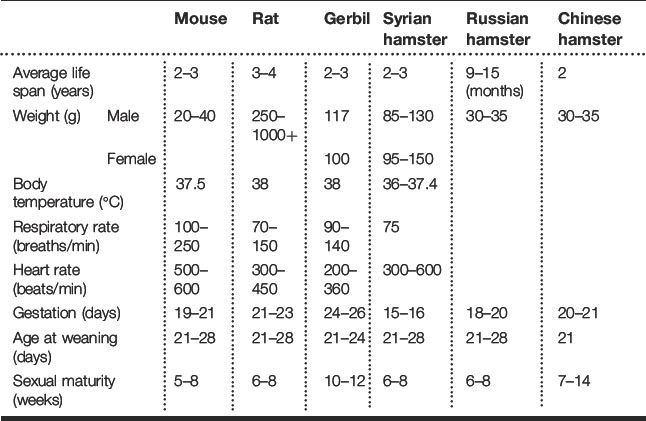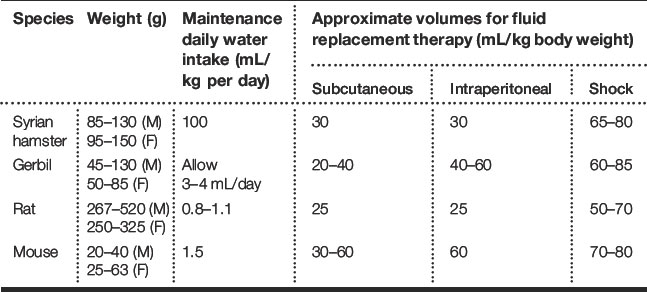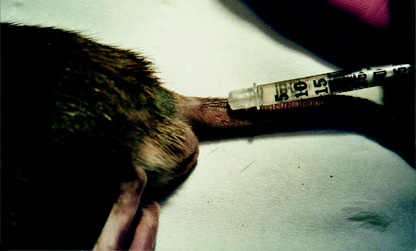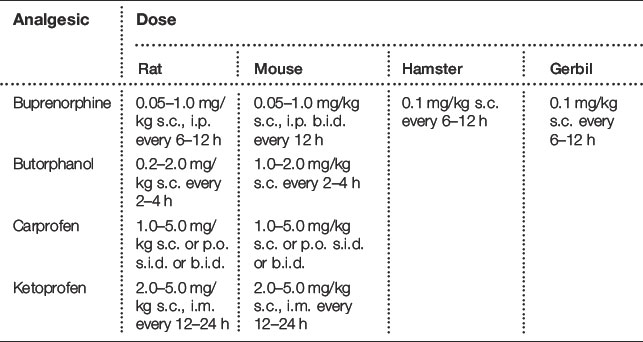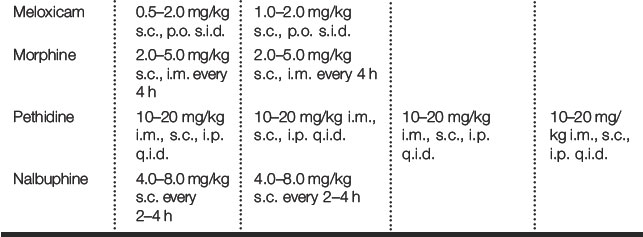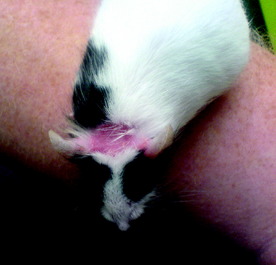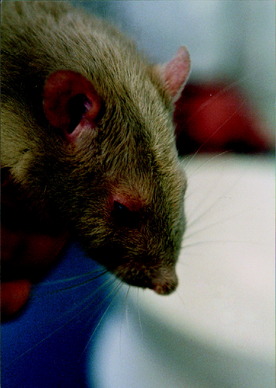Chapter 4 Small rodents
Small rodents are popular both as children’s (and adult) pets, but also as show animals. Rats in particular have a very enthusiastic following. Those species that are likely to be encountered in the veterinary surgery are:
Nursing care
See Nursing Care in Rabbits for general principles.
Small rodents by virtue of their size and the high risk of predation are forced to obtain most of their water from preformed (food) and metabolic sources. Dehydration can be a real issue, especially at higher environmental temperatures (Table 4.2).
Fluids can be given s.c., i.p. or i.o. However, for small rodents, the intravenous route (Fig. 4.1) for fluid administration is largely impractical, but Table 4.3 gives suggested sites.
Table 4.3 Small rodents: Sites for fluid administration
| Intravenous (rat and mouse) | Lateral tail vein (helps if warm!) (Fig. 4.1) |
| Intravenous (hamster) | Very difficult: lateral tarsal vein, anterior cephalic vein and lingual vein |
| Intravenous (gerbil) | Lateral tail vein or saphenous vein |
| Intraperitoneal (all three species) | Hold the patient vertically downward and inject into the lower left quadrant |
| Intraosseous (all three species) | Under GA to insert either an intraosseous catheter or a hypodermic needle into the marrow of either the femur (via the greater trochanter) or tibia (through the tibial crest). Fluids, colloids and even blood can be i.o. if necessary. |
Hypothermia
Much endogenous body heat is generated by gut and muscle activity; sick, inactive or anaesthetized rodents are prone to hypothermia (Jepson 2004). Use a heat source, e.g. electric heat mat, plus insulation such as silver foil over the feet, pinnae and tail (reduces heat lost by conduction) and bubble wrap (reduces heat lost by convection). Maintain in warm air, e.g. incubator, or use a commercial medial warm air generator.
Analgesia
Anaesthesia
Small rodents may have subclinical respiratory infections.
There is no need to starve – prolonged fasting can lead to hypoglycaemia.
Skin disorders
Alopecia
Erosions and ulceration
Nodules and non-healing wounds
Ectoparasites
Findings on clinical examination
Investigations
Treatment/specific therapy
Respiratory tract disorders
Findings on clinical examination
Investigations
Treatment/specific therapy
Stay updated, free articles. Join our Telegram channel

Full access? Get Clinical Tree


